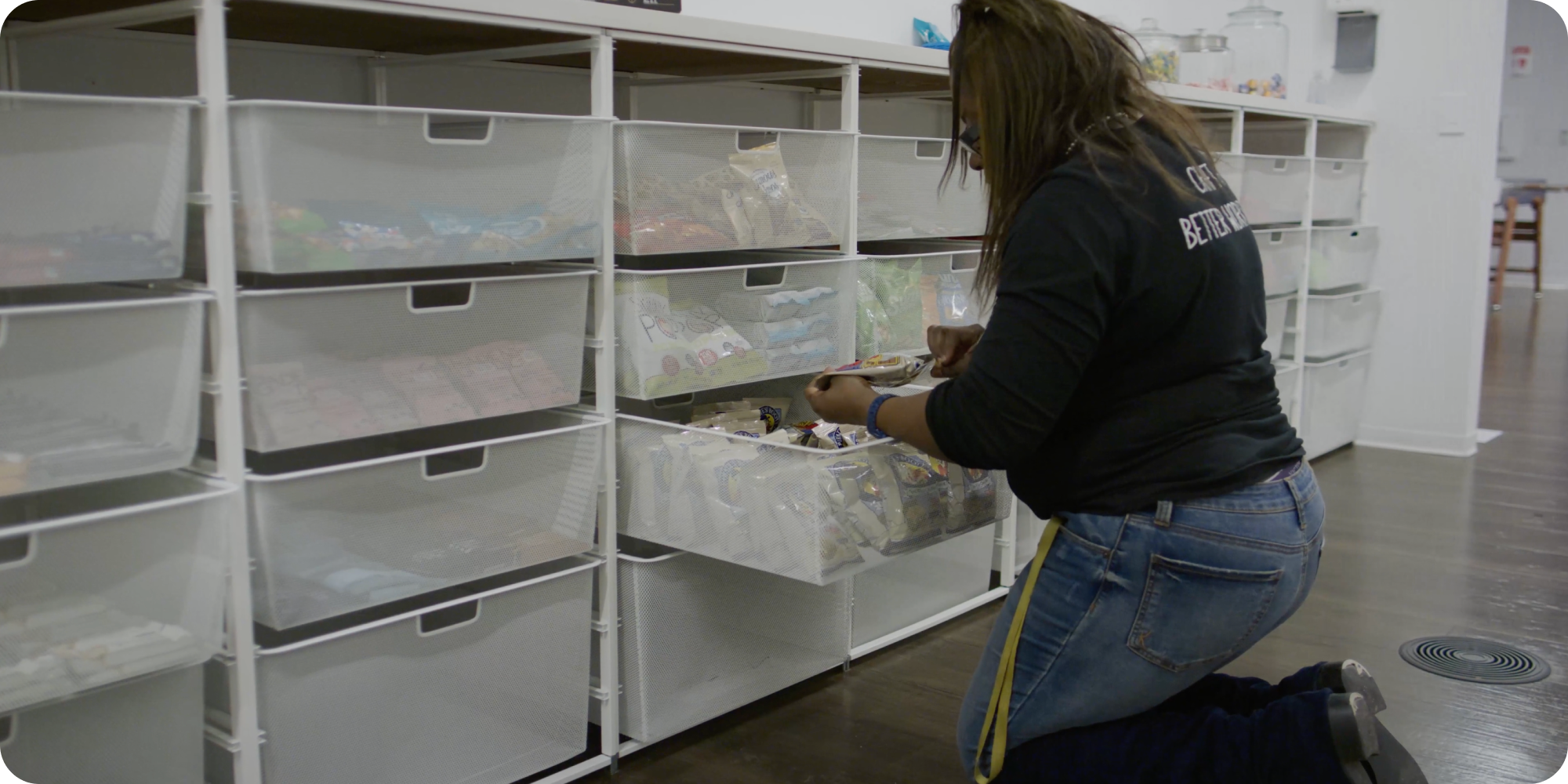Why Smart Companies Are Doubling Down on Office Snacks Ahead of 2026
Office snack programs are a critical investment that attracts talent, fuels productivity, and gives you leverage.
✍️ Written by Rebecca Ross
🕚 7-Minute Read • Published Friday, August 1, 2025

According to the news, office snacks are doomed after the One Big Beautiful Bill eliminates tax benefits for office food and beverage expenses starting in 2026. Let's be blunt: this is fearmongering disguised as news. The companies that stop investing in office snacks are the companies that will lose in the war for talent, innovation, and survival.
In our Q2 2025 Office Pantry Benchmarks, we’re seeing the exact opposite. Industries that are doubling down on AI investments and talent are simultaneously doubling down on their office pantry programs. Why? Because innovative tooling like AI is only as good as the people behind it. To build, sustain, and scale AI-powered businesses, companies need the best talent, and that talent needs a workplace that fuels their best work.
So yes, losing a tax deduction for snacks is a setback. But it’s important to remember why snacks matter beyond tax codes. Your office pantry program is not a frivolous perk; it's your competitive advantage. Let's dive into three reasons why office snacks will remain a core part of the modern workplace.
Table of Contents:
1. Snacks Are Part of Your Compensation Package
In today’s economy, where inflation remains high and everyday expenses keep rising, snacks have become a vital part of your employee compensation strategy.
Americans now spend an average of around $235 per week on groceries, totaling over $900 per month. This is nearly a 23% increase in food costs over the past five years. Even as inflation slows overall, grocery prices continue to rise steadily, making food one of the fastest-growing household expenses.
Regardless of whether employees work in or out of the office, here's what the average spend on food and beverage looks like for a single employee:
- Coffee: $1.24+/cup (If you're lucky and your order is simple)
- Breakfast: $6+
- Snacks: $1.84+
- Drinks: $2+
- Lunch: $15+
This is a significant expense, especially in an environment where financial stress is pervasive. According to PwC’s Employee Financial Wellness Survey, nearly 4 in 5 employees are living paycheck to paycheck, and 53% of employees who report financial stress cite rising everyday costs as their biggest worry.
Pantry programs address this immediate money management challenge by reducing the daily out-of-pocket expenses employees face when coming into the office. By providing subsidized office snacks and beverages, you offer a tangible financial benefit that helps ease their everyday burden and helps retain employees long-term.
You decide: invest a little now or pay exponentially later. Over 73% of employees struggle to afford anything outside of basic living expenses. Food is one of the biggest daily expenses employees face. Ease that burden, and you keep your talent focused and committed instead of looking elsewhere.
Mara Jones, VP of People, Crafty
This approach aligns with findings from Morgan Stanley’s State of Workplace Financial Benefits Study, which found that 91% of employees are more likely to stay with a company that provides financial benefits tailored to their specific needs. A well-run pantry can be a critical part of this financial support system.
However, delivering real financial value through your pantry requires more than just stocking shelves. It demands a data-driven feedback loop to continuously understand what your employees want and need. By partnering with the right providers and leveraging smart tooling, you can rapidly adjust offerings to maximize impact. Innovative pantry solutions are the difference between a pantry that drains your budget and an investment that truly serves your team and provides meaningful financial relief.
UNLOCK MORE ROI FROM YOUR PANTRY
This playbook outlines 12 proven strategies to create efficiencies, reduce waste, maximize spend, and drive a quality experience that accelerates your organization.
2. Snacks Are a Critical Investment in Your Team’s Performance
Every minute of lost productivity chips away at your company’s success. Employees constantly face numerous small decisions: when to take breaks, what to eat or drink, and where to go to find them, among others.
These seemingly minor choices accumulate into what psychologists refer to as decision fatigue, depleting mental energy and diminishing cognitive capacity before work even genuinely starts. Forbes emphasizes that these micro-decisions exhaust the brainpower required for complex problem-solving and innovation.
Financial stress compounds this drain. According to PwC, financially stressed employees are nearly five times more likely to admit that personal finance issues have been a distraction at work. More than half of employees spend three or more hours per week dealing with or thinking about their finances while on the job. This lost focus translates to disengagement and diminished productivity, with Gallup estimating that lost productivity costs the global economy an estimated $438 billion annually.
"The last thing a workplace needs is added friction. Whether it’s from daily micro-decisions or financial stress. When people are worried about money, it drains their focus and energy. A strategic workplace from pantry design to financial wellness support removes friction, fuels consistency, and drives performance. High-performing teams don’t happen by accident; they’re built by design."
Robin Cardoso, VP of Client Experience, Crafty
How an office pantry can boost productivity:
- Maximize Time: An onsite pantry reduces the time employees spend thinking about food and leaving the office to find it. A recent survey found it takes about 16 minutes for an employee to do a single coffee run, and with just three such trips a week, employees lose an entire workweek per year.
- Combat Cognitive Drain: A thoughtfully managed pantry simplifies employees’ daily routines by removing the need to make constant food-related decisions. By providing easy access to preferred snacks and drinks, the pantry reduces cognitive load and frees mental energy for higher-value work. This helps your team stay sharp, focused, and productive throughout the day.
- Sustain Energy and Morale: Convenient access to healthy snacks helps maintain stable energy levels, which is critical for preventing fatigue and burnout—two of the biggest productivity killers. According to McKinsey, workplaces that actively support employee well-being see significant boosts in engagement, innovation, and overall performance. Providing nutritious snacks is a simple yet powerful way to foster resilience and keep morale high, enabling your team to thrive throughout the workday.
- Protect Your Competitive Edge: The AI boom is driving fierce competition for top talent. Our Q2 2025 pantry benchmarks reveal a direct correlation between pantry spend and industries aggressively investing in AI. These companies know that attracting and retaining elite talent is essential to sustaining their competitive advantage. If AI talent leaves, they risk losing that edge to their competitors.
3. Pantry is an Amenity That Gives You More Leverage
Your workplace is like any other real estate asset. The square footage and location are important, but the amenities can be huge differentiators that define value, demand, and long-term viability.
An uninspired office full of sad desks and even sadder people is a liability both for you and for property owners. It sends a clear message that this isn’t a place people want to be. In all real estate, but especially commercial real estate, value is directly tied to demand and occupancy. When people don’t show up, space goes unused, areas see less traffic, and property values drop.
Investing in your office pantry creates a culture that employees are willing to commute for, driving traffic into the area, and increasing the value of that area. Unlike amenities like gyms or large conference rooms that see limited use by a small segment of employees, the pantry is one of the only amenities used by everyone, every day. It’s the most visible and frequented space in the office, and when executed well, it delivers unparalleled value for all parties involved.
According to JLL’s guide on negotiating commercial lease renewals, demonstrating how your investments benefit the property owner is key to securing better terms. An office pantry buildout can enhance the building’s value, and when framed as a mutual benefit, property owners are often willing to entertain offsetting upgrades or giving you better leasing terms to keep you as a tenant because you're helping them improve their asset long-term.
"A pantry drives traffic, traffic builds value, and that value gives you leverage. Present the ROI when negotiating terms that cover buildouts or upgrades to the asset, such as plumbing, electrical, finishes, and equipment. The worst deal is the one you don’t ask for."
Cam Lawrence, CFO, Crafty
How to Leverage Your Pantry’s Impact to Secure Better Leasing Terms:
- Reduces Vacancy Risk: Companies that invest in buildouts of custom amenities are more likely to stick around for longer, which is beneficial for the property owner. It costs 3x more to get a new commercial tenant than to retain an existing one, and takes upwards of two years to recoup the lost income from the vacancy.
- Improves the Asset's Value: Research shows that “trophy” office properties, known for their exceptional amenities, consistently enjoy higher occupancy rates and attract the most sought-after tenants. Investing in an office pantry aligns your space with these high-caliber amenities and benefits both the company in the short term and the property owner in the long term.
- Drives Consistent Office Traffic: According to Forbes, food and beverage amenities are among the top reasons employees return to the office. Employees save an estimated $10–$20/visit through an office pantry program instead of purchasing offsite. These costs foster regular office attendance that benefits property owners by creating a vibrant, well-utilized space.
- Enhances Real Estate Marketability: Companies want to locate where other successful businesses thrive. By investing in amenities like a pantry, you help showcase the space’s potential to attract and retain tenants. This makes it easier to lease other vacant units and strengthens the overall appeal and value of the property and surrounding area—benefiting everyone through a more vibrant, desirable location.
Conclusion
In an era defined by rapid AI innovation and intensified competition for top-tier talent, organizations that double down on comprehensive pantry programs position themselves to lead rather than follow.
Eliminating snacks in pursuit of short-term savings jeopardizes your ability to retain key employees, erodes workplace productivity, and undermines your leverage in your real estate asset.
Sustained success demands recognizing office snacks as a strategic lever; one that cultivates a high-performing workforce, enhances your employer brand, and fortifies your long-term business resilience.
Explore the Craftyverse
CRAFT
A BETTER
WORKPLACE
Elevate your office food and beverage program with enhanced services managed in one innovative, centralized platform.


![Office pantry trends report [2025] Office pantry trends report [2025]](https://info.craftydelivers.com/hubfs/Office%20pantry%20trends%20report%20%5B2025%5D.png)
